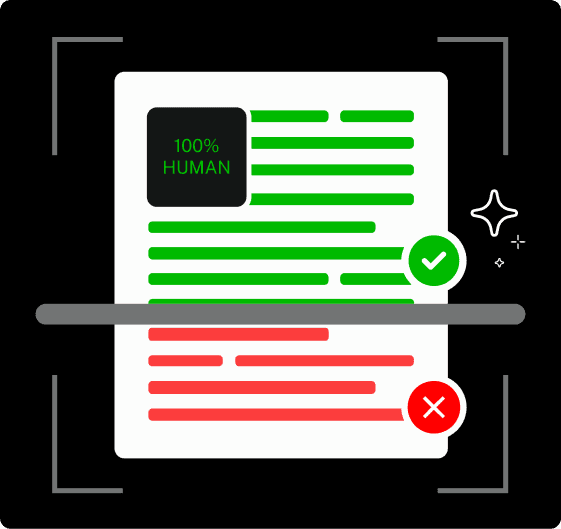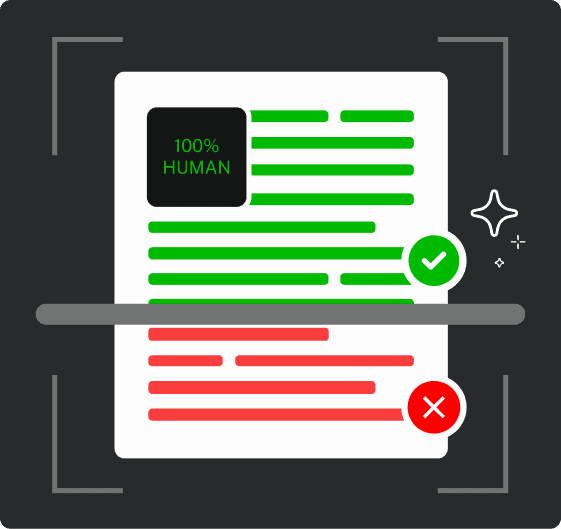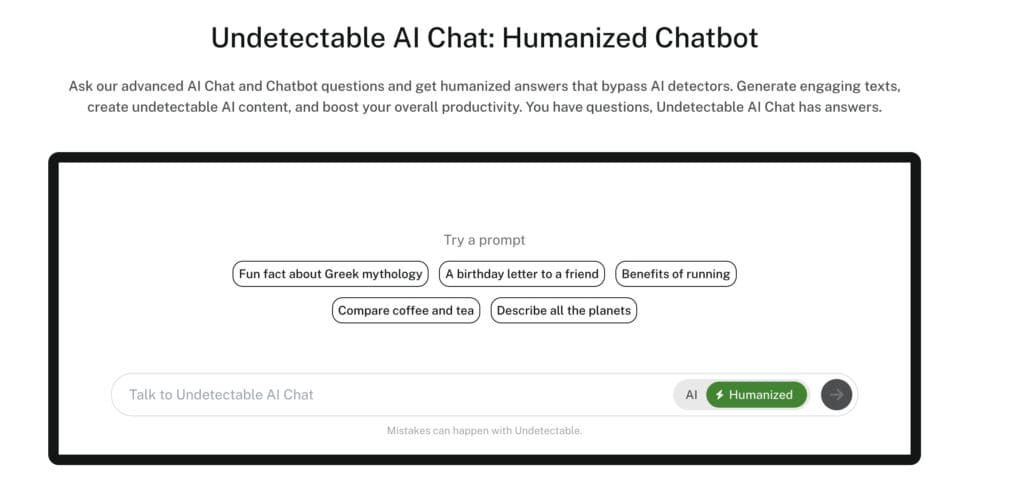Traditional English has eight parts of speech, and each of them has a key role to play. Among them are prepositions, which form prepositional phrases.
The concept alone might sound overly complicated, but they’re frequently used to provide extra details to a story.
Because of them, you get to know when something happened, where something is, and how something was done.
So what is a prepositional phrase, exactly? It’s time you found out. In this article, we discuss prepositional phrases, how they function, the different types, real examples, and how you can practice using them.
Whether you’re writing a speech, a story for your upcoming book, or another type of content meant to make a strong impression, understanding this part of grammar helps you write with more confidence and purpose.
Key Takeaways
- Prepositional phrases begin with a preposition and include an object (plus any modifiers). These add helpful context by answering questions like where, when, or how.
- There are different types of prepositional phrases, such as those that can function as adjectives or adverbs, and those that appear at the beginning of sentences, in passive constructions, or even less commonly as nouns.
- The easiest way to identify a prepositional phrase is to look for the preposition followed by a noun or pronoun that answers questions like where, when, or how.
What Is a Prepositional Phrase?
Before we learn what a prepositional phrase is, it’s important to know what prepositions are first.
A preposition is essentially a word that links one part of a sentence to another.
It shows how things relate in terms of place, time, direction, or even cause.


Never Worry About AI Detecting Your Texts Again. Undetectable AI Can Help You:
- Make your AI assisted writing appear human-like.
- Bypass all major AI detection tools with just one click.
- Use AI safely and confidently in school and work.
For example: “at the park,” “before noon,” or “with excitement.”
Common prepositions include:
- On
- In
- Under
- Over
- To
- From
- By
- With
- Without
- Through
- After
- Before
- Beneath
- Between
- About
A preposition is usually followed by a noun or pronoun. This becomes its object.
The combination of the preposition, its object, and/or any of the modifiers (like adjectives) is then what makes up a prepositional phrase.
Here are some examples of prepositional phrases:
- She walked through town.
- They met after dinner.
- The gift is from grandma.
- He looked under the bed.
Starting with a simple preposition and object, you can then expand with descriptive modifiers for more information.
With modifiers, these sentences become:
- She walked through the quiet, empty town.
- They met after a long, awkward dinner.
- The thoughtful gift is from grandma in the countryside.
- He looked under the dusty bed with broken legs.
One common writing myth people get wrong is the idea that you can’t end a sentence with a preposition.
Saying “Who are you talking to?” is perfectly fine, right? Trying to reword it as “To whom are you talking?” is technically correct too, but it can sound overly formal or unnatural.
It’s a friendly reminder that you don’t have to follow writing rules that make your writing sound unnecessarily stiff.
What Does a Prepositional Phrase Do?
Prepositional phrases often give extra details. They can modify verbs, nouns, adjectives, or adverbs and tell you where, when, or how something happens.
Without prepositions, what you write can feel incomplete or vague.
These are what a prepositional phrase can do:
- Show a place: The book is on the table.
- Indicate time: They arrived after the show.
- Explain direction: She walked toward the park.
- Add description to nouns: The man in the red coat smiled.
- Clarify manner or method: He replied with certainty.
- Provide reason: She did it for attention.
- Strengthen comparisons: He’s faster than the guy with the bike.
You can even use more than one prepositional phrase in a sentence to build clearer images or ideas.
- The cat slept under the couch during the thunderstorm.
- He placed the files on the desk next to the lamp.
- She found the note between the pages of her old notebook.
When used correctly, prepositions can give better context and guide readers more seamlessly to your writing.

Types of Prepositional Phrases
There are lots of ways you can use prepositional phrases to add more depth to your sentences.
These can supplement literary devices by creating vivid imagery.
Rather than just saying “the wind howled,” you can turn it into “the wind howled through the trees.”
This little addition packs an extra punch and makes your idea or sentence feel complete.
Here are the types of prepositional phrases and how to use them.
Adjective Prepositional Phrases
These phrases describe nouns by serving as adjectives. They usually appear right after the noun that they modify. Use this when you’re specifying which one or what kind of thing it is.
Example: The painting on the far wall caught my attention.
Adverb Prepositional Phrases
These function as adverbs. These work well for providing clear and quick additional context to your statements.
Example: She spoke with grace.
Introductory Prepositional Phrases
These come at the start of a sentence and set the stage for what follows. Be sure to include commas when making longer phrases.
Example: Before the concert, we grabbed dinner.
Compound Prepositional Phrases
These use multiple prepositions to describe more complex relationships. Avoid stacking too many, however, as it can make sentences hard to follow.
Example: The cat hid under the bed near the window.
Prepositional Phrases as Nouns
In some cases, the entire phrase can act as a noun. The phrase then acts as the subject or object of a sentence.
This structure is less common, so use it sparingly to add variety to your writing style.
Example: Before sunrise is my favorite time to walk.
Prepositional Phrases in Passive Constructions
Prepositional phrases can also appear in passive constructions to show who performed the action or what caused it.
It’s recommended to use these when the action is more important than who did it.
Just remember not to overuse passive voice, as this can make your writing feel indirect.
Example:
- Active – The chef prepared the one-of-a-kind meal.
- Passive – The one-of-a-kind meal was prepared by the chef.
How to Identify a Prepositional Phrase
Whether you’re analyzing text for a school project, editing your drafts to tighten them up, or just practicing your English, knowing how to identify a prepositional phrase is one way to gain control over your writing.
Here are the steps to do so.
1. Review Common Prepositions
Start by really learning the most common prepositions. We’ve already tackled this briefly earlier, but let’s recap some frequently used ones:
- Location: in, on, at, under, over, beside, between
- Time: before, after, during, since, until
- Direction/Movement: to, from, toward, through, across
- Others: with, for, by, about, of
2. Look for Words That Answer Key Questions
Prepositions often answer:
- Where? (The keys are on the table.)
- When? (We’ll meet after lunch.)
- How? (She won with skill.)
3. Check for a Following Noun or Pronoun
You can expect prepositions to always have a subject, like a noun or pronoun, right after them.
- ✅ With a preposition: He sat beside his friend. (Friend = object)
- ❌ Without a preposition: He walked by quickly. (By modifies walked, and here, it’s an adverb.)
4. Watch Out for Tricky Cases
Some words can be prepositions or other parts of speech, depending on usage:
- Up (Preposition: She climbed up the ladder. / Adverb: She woke up.)
- Before (Preposition: Before dinner / Conjunction: Before we eat…)
5. The Removal Test (It Usually Works!)
Most of the time, if you can take out the phrase and the sentence still holds up, then it’s a prepositional phrase.
Example: “The email with the attachment got lost.”
Remove “with the attachment”, and you get “The email got lost”. It still makes sense.

We understand how hard it can be to spot these right away, so our advice is to use the Undetectable Ask AI tool as your guide.
All you have to do is snap a photo or upload a screenshot of your question directly from your device, and the AI will instantly analyze it to give you accurate answers.
And if you’re doing research, each answer includes links to at least two academic sources. That means your work can be properly cited, too.

For more general help, you can turn to the Undetectable AI Chat. Ask it anything and get human-like responses that are polished and natural.
We asked the AI Chat to help identify prepositional phrases in a paragraph. You can use it to write better or be more efficient when working on a paper.
Examples of Prepositional Phrases in Sentences
You’ll see prepositional phrases at the start, middle, or end of a sentence.
Try spotting where they are in the examples below:
- After the meeting, we grabbed coffee.
- She left her keys on the kitchen counter.
- The kids hid under the bed during the storm.
- He ran through the crowd to catch the bus.
- They arrived at exactly midnight.
- I found the note between the pages of my book.
- With a big smile, she greeted the visitors.
- He painted the room in a rush, without any help.
- By the end of the day, everyone was exhausted.
- The gift from my aunt meant a lot to me.
Ready to check? Here they are:
- After the meeting
- On the kitchen counter
- Under the bed, during the storm
- Through the crowd
- At exactly midnight
- Between the pages, of my book
- With a big smile
- In a rush, without any help
- By the end of the day
- From my aunt
Keep practicing with different types of prepositional phrases.
The more you spot and practice, the easier they’ll become to use.

How to Practice Using Prepositional Phrases
Who says practicing using prepositional phrases has to be repetitive?
Make it efficient but also interactive with Undetectable AI, a go-to tool for millions of students, writers, content creators, and anyone looking for a writing companion.
Here’s how you can use Undetectable to get better at using prepositional phrases:
- AI Essay Writer: Try writing short paragraphs or full essays with prepositional phrases. With the tool, you can add detail, flow, and clarity to your points.
- AI Paraphraser: Practice varying your sentence structure. Turn dull statements into something fresh without losing meaning.
- AI Humanizer: Use this to polish your tone. It keeps your prepositional phrases natural and improves fluency without sounding robotic.
- Ask AI: Use it as a guide to grammar quizzes or to get direct and specific feedback on your sentence structure.
AI writing tools are now a regular part of learning, writing, and creating exciting things. So get creative and see where it goes!
Scroll down and see what our AI Detector and Humanizer can do!
FAQs About Prepositional Phrases
What is a prepositional phrase?
A prepositional phrase is a group of words that begins with a preposition and ends with its object. That object is usually a noun, pronoun, or a noun phrase.
These phrases often include modifiers, and they help give more detail about time, place, direction, cause, or method.
How can I tell if a phrase is a prepositional phrase?
Start by spotting the preposition. If it’s followed by a noun or pronoun, and it gives more context to something else in the sentence, it’s likely a prepositional phrase.
You can also try removing it. It’s probably a prepositional phrase if the sentence still works.
How can I practice using prepositional phrases?
Try writing simple sentences and adding prepositional phrases to give more detail.
Use tools like Undetectable AI to help you revise, paraphrase, or assist you in projects.
The AI Essay Writer and Ask AI features are great for practice, while the AI Paraphraser and Humanizer improve your sentence style and tone.
Know the Phrase, Write with Confidence
Prepositional phrases might seem like mere additions, but they’re incredibly powerful. And once you know how they work, you can use them with purpose.
These phrases help your writing feel more natural, descriptive, and complete.
When practicing or editing your own work, Undetectable AI can be your reliable partner for spotting phrases, polishing tone, and providing custom feedback as you go along.
Responsible AI use means staying curious while still keeping your voice front and center.
Let Undetectable support your writing journey while keeping your ideas clear, authentic, and unmistakably yours.
